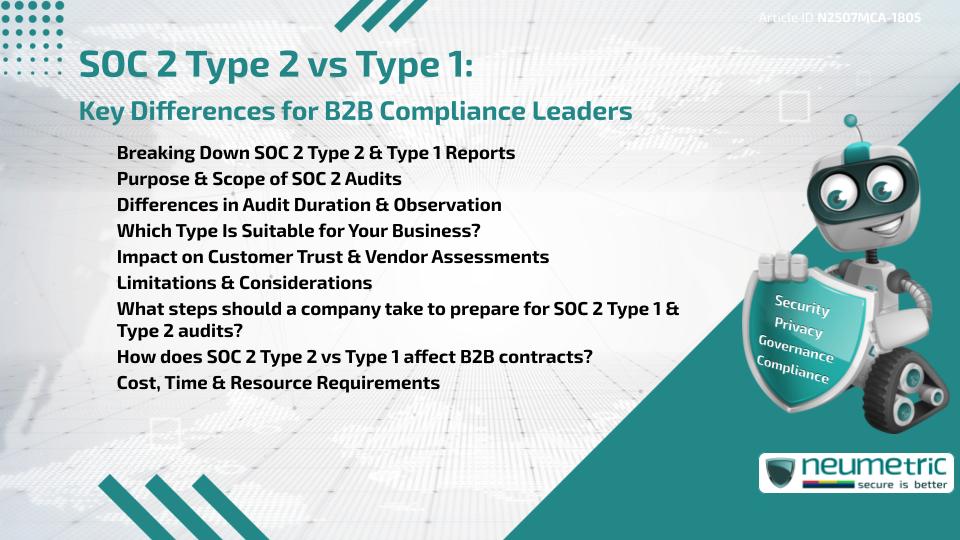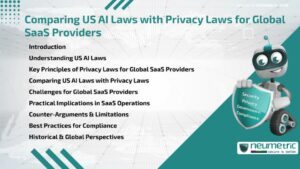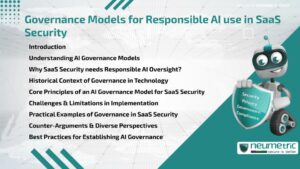Table of Contents
ToggleIntroduction
In today’s competitive B2B environment, earning & keeping client trust is not a choice—it’s a necessity. One way companies demonstrate that trust is by undergoing a SOC 2 Audit. But when it comes to SOC 2 type 2 vs type 1, which one is right for your business? Though both reports are based on the same Framework, they differ in purpose, depth & impact.
This article explores the key distinctions between SOC 2 Type 1 & Type 2, helping Compliance leaders choose the right approach for their operational goals & Client expectations.
Breaking Down SOC 2 Type 2 & Type 1 Reports
The SOC 2 Framework, governed by the American Institute of Certified Public Accountants [AICPA], assesses how a service organisation manages Customer Data. Both Type 1 & Type 2 reports evaluate the same five Trust Services Criteria, including security, availability, processing integrity, confidentiality & Privacy.
- SOC 2 Type 1 Reviews the setup & implementation of controls as they exist at a single point in time.
- SOC 2 Type 2 Examines both how controls are designed & how effectively they operate over a period—typically ranging from three (3) to twelve (12) months.
Grasping these distinctions is key to making the right choice between SOC 2 Type 2 and Type 1.
Purpose & Scope of SOC 2 Audits
Both audits are meant to strengthen client trust, but they focus on different aspects of compliance.
- SOC 2 Type 1 is useful when a company is newly implementing controls & wants to provide immediate proof of Compliance.
- SOC 2 Type 2 Works best when consistent performance & mature operational practices need to be demonstrated.
Many companies start with Type 1 as a stepping stone before advancing to Type 2. But for organisations already operational with controls in place, jumping directly to Type 2 can signal stronger credibility.
Differences in Audit Duration & Observation
A key distinction between SOC 2 Type 2 & Type 1 is the point in time versus the time span over which the controls are assessed during the audit.
- Type 1 examines systems as they exist today—making it quicker to complete (typically within a few weeks).
- Type 2 covers a time frame—typically six (6) to twelve (12) months—& involves ongoing monitoring & thorough documentation of control activities.
This longer observation window makes Type 2 a more rigorous validation of sustained control practices.
Which Type Is Suitable for Your Business?
Deciding between SOC 2 Type 2 vs Type 1 depends on factors like your business model, client demands & where you are in your growth journey.
- Early-stage companies with limited resources may find Type 1 more attainable.
- Mature or mid-market SaaS companies serving regulated industries often require Type 2 to meet Client or contractual requirements.
- Companies entering enterprise markets typically benefit from the stronger assurance provided by a Type 2 report.
For vendor security questionnaires, Type 2 often carries more weight.
Impact on Customer Trust & Vendor Assessments
In B2B transactions, trust isn’t just implied—it must be verified. A SOC 2 Type 2 report provides greater assurance to customers that your security practices are not only designed well but also followed consistently.
While Type 1 may suffice for short-term engagements or early discussions, Type 2 strengthens your credibility in vendor Risk Assessments, partnership evaluations & renewal cycles.
Here’s how vendor assessments use SOC 2 reports.
Limitations & Considerations
Despite their benefits, both types of reports have limitations:
- SOC 2 Type 1 offers limited evidence, as it reflects a single point in time.
- SOC 2 Type 2 is resource-intensive, requiring extensive Evidence Collection, ongoing monitoring & internal alignment.
Additionally, SOC 2 reports are not public & can only be shared under NDA, limiting their use in broad marketing or promotional efforts.
See more about report limitations from AICPA.
What steps should a company take to prepare for SOC 2 Type 1 & Type 2 audits?
Preparation is key to successful audits—regardless of type. Begin by identifying applicable controls, documenting internal policies & conducting a readiness assessment. Using automated compliance platforms can greatly streamline the process & minimise human error.
For SOC 2 type 2 vs type 1, preparation for Type 2 usually requires more maturity, process consistency & time.
How does SOC 2 Type 2 vs Type 1 affect B2B contracts?
More enterprise contracts are beginning to specify the type of SOC 2 Report expected. Type 2 is often a contractual requirement, especially in sectors like Fintech, Healthcare & HR tech.
In such situations, presenting a Type 1 report could slow down onboarding or result in further examination. Understanding Client needs early can help you decide where your company stands on the SOC 2 type 2 vs type 1 spectrum.
Cost, Time & Resource Requirements
Let’s break it down:
- SOC 2 Type 1: Lower cost, shorter timeframe, fewer resource requirements.
- SOC 2 Type 2: Higher cost, longer timeline & extensive evidence gathering.
If budget is a concern, many companies begin with Type 1 & upgrade later. But skipping straight to Type 2 may save time in the long run for high-growth B2B SaaS businesses.
Takeaways
- SOC 2 Type 1 is quicker to complete & well-suited for startups or organizations implementing new controls.
- SOC 2 Type 2 Shows consistent operational effectiveness & builds greater customer trust.
- The decision depends on your Client expectations, budget & operational maturity.
- While both reports follow the same Trust Services Criteria (TSC), they vary in terms of scope & the level of evaluation.
- B2B organisations targeting enterprise contracts should prioritise Type 2 for better positioning.
FAQ
What distinguishes SOC 2 Type 2 from Type 1?
SOC 2 Type 1 reviews controls at a single point in time, while Type 2 evaluates how those controls operate over several months.
Which report is more trusted in B2B partnerships?
SOC 2 Type 2 is generally more trusted because it shows that your organisation follows its Policies consistently over time.
Can a company bypass SOC 2 Type 1 & proceed directly to Type 2?
Yes, if your controls are already mature & well-documented, going directly to Type 2 is possible & often preferred by clients.
How long does each Audit take?
SOC 2 Type 1 can be completed in a few weeks. SOC 2 Type 2 usually takes at least three (3) to twelve (12) months due to the observation period.
Does Type 2 cost more than Type 1?
Yes, Type 2 is more expensive due to its extended timeline & deeper control evaluation.
Are both reports based on the same criteria?
Yes, both are based on the same five Trust Services Criteria from AICPA.
Can we use SOC 2 Type 1 for marketing?
No. Neither report is meant for public use. They are shared under NDA to specific clients or partners.
Is SOC 2 required by law?
Is SOC 2 compliance legally required, or just a best practice in B2B industries?
Need help?
Neumetric provides organisations the necessary help to achieve their Cybersecurity, Compliance, Governance, Privacy, Certifications & Pentesting goals.
Organisations & Businesses, specifically those which provide SaaS & AI Solutions, usually need a Cybersecurity Partner for meeting & maintaining the ongoing Security & Privacy needs & requirements of their Clients & Customers.
SOC 2, ISO 27001, ISO 42001, NIST, HIPAA, HECVAT, EU GDPR are some of the Frameworks that are served by Fusion – a centralised, automated, AI-enabled SaaS Solution created & managed by Neumetric.
Reach out to us!





